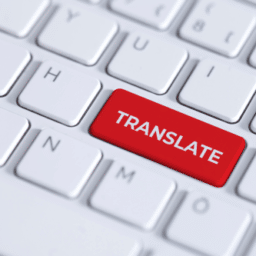

Cultural sensitivity means understanding and respecting cultural differences and their impact on communication. Translators must know the cultural context to pass the information to people from various backgrounds.
Certain phrases may be neutral in one country but entirely inappropriate in another. An English “You” for an unknown person might sound too nonchalant to representatives of other cultures. Learn how to avoid cultural shock in your translation before you offend someone.
Contents
Why is cultural sensitivity important in government translation?
Translation that ignore cultural context lead to misunderstandings and, in extreme cases, can offend recipients. Cultural sensitivity builds trust between the government and foreign-language-speaking residents of a country. Accurately translated forms facilitate the handling of administrative matters and simplify bureaucracy.
The government should listen to each individual and take necessary actions to assist. All employees should be trained in cultural awareness. However, biases against specific nationalities or social groups are common. This natural phenomenon cannot be eliminated; stereotypical associations involuntarily activate. To overcome them, learn to recognise and accept cultural differences.
Cultural differences affect the messages. Consider gestures and expressions, for example. In England, a handshake is a standard greeting, but in Japan a bow is preferred. The same goes for idioms. “Let’s call it a day” is fully understandable to a British person, but it may seem unclear to a foreigner. Always take it into account during translation.
Improper translation disrupts communication between the government and petitioners. Incorrectly translated information causes confusion.
Why is translation needed for government?
Translation facilitate local government. Various institutions utilise translation at multiple levels, including documents, informational brochures, meetings, and websites.
Imagine living in a country where English is the official language, but you primarily speak French. Handling administrative matters would be a significant challenge for you. Translation enables access to public services and support the democratic country.
The government uses translation in public health, education, law, and social services. The service aids in the integration of immigrants and refugees. Translated educational materials and information about the labour market help newcomers adapt to their new environment. They can quickly become independent and productive members of society.
Biases and stereotypes in translation
Biases and stereotypes can unintentionally seep into the final text. Common biases include assuming that certain phrases or concepts are universally understood, which may not be the case.
For instance, Western translators might presume that idioms like “breaking the ice” or “raining cats and dogs” are comprehensible to all, yet these expressions might confuse non-Western audiences.
Stereotypes often manifest unwillingly. Non-experienced administration staff can assume that all Arabic speakers are Muslim or that all Asians have similar cultural practices. These biases and stereotypes lead to mistranslation that misrepresents the source material.
Strategies for recognising and overcoming biases
Recognising and overcoming biases requires a conscious effort and a systematic approach. Firstly, translators should engage in self-reflection to identify their biases through regular training sessions that focus on cultural awareness and sensitivity. Peer reviews and feedback mechanisms are also useful.
Secondly, a diverse team of translators will mitigate the influence of individual biases. A team that includes members from various cultural backgrounds brings multiple perspectives to the table.
Another effective strategy is to use cultural sensitivity guidelines and glossaries that provide culturally appropriate translation for common terms and phrases.
Official language
The official language used in administrative documents varies by country, requiring translators to pay close attention to formal nuances in order to be culturally sensitive. For instance, in Poland, very formal phrases like “Szanowny Panie/Szanowna Pani” (Dear Sir/Dear Madam) are used in official correspondence.
However, in Scandinavian countries, less formal expressions are common. The official language is simplified to be more understandable to the public. Disregarding these differences makes a translation sound either too stiff or too casual. This will affect the reception of the message.
Cultural norms and customs
Cultural norms significantly influence how information is received. In Japan, people avoid direct criticism and try to maintain face in every situation. Polite language is used in official situations, and statements are rarely direct. In government translation from Japanese to English, the translator must find a way to transfer this tone.
In Arab culture, numerous polite expressions and references to religion are used. This may sound inappropriate in a European context if not correctly translated.



How does a language shape thoughts and cultural perception?
Language is not just a way to communicate; it shapes how we think and perceive the world. This idea is known as linguistic relativity, which suggests that the structure and vocabulary of our language influence our world view.
Some languages have many words for a single concept. Its speakers see and describe nuances that others are simply missing. If a language lacks words for certain concepts, its speakers might find it harder to understand or talk about these ideas.
Imagine two languages: one with multiple words for different types of snow (Inuit languages) and another with just one word for snow (Spanish). Speakers of the first language will likely notice and appreciate the subtle differences in snow types more than speakers of the second language. This affects how they interact with their environment and even how they think about it.
Linguistic relativity in different languages
One clear example of linguistic relativity is found in how different languages describe colours. In Russian, there are separate words for light blue (голубой or goluboy) and dark blue (синий or siniy), whereas English uses the word “blue” for both shades (navy blue).
Research conducted on Massachusetts Institute of Technology shows that Russian speakers distinguish between light and dark blue faster and more accurately than English speakers. This suggests that having distinct words helps Russian speakers see these colours as more different than English speakers do.
Another example is the way languages handle directions. English speakers typically use relative directions (“left” and “right”), while some indigenous languages in Australia use cardinal directions like “north” and “south”. A speaker of these languages might say, “The cup is north of the plate”, even on a small table. This means they need to be constantly aware of their orientation, which can affect their spatial awareness and navigation skills.
Translating words is not always enough. Translators need to work on their cultural competence. They must also consider how the language changes the way information is perceived.
High-context and low-context languages
Languages can be broadly classified into high-context and low-context languages. This classification is based on how much they rely on implicit versus explicit communication.
High-context languages are Japanese, Arabic, and many indigenous languages. They rely heavily on the context in which something is said. Their speakers are experts in noticing changes in body language, tone of voice, and the situation. Much of the information is implied through non-verbal cues, background knowledge, and shared experiences.
In contrast, low-context languages like English, German, and Scandinavian languages depend on direct, clear, and explicit communication. Native speakers tend to say exactly what they mean, leaving little room for interpretation based on context. This straightforward approach ensures that the message is understood without needing to read between the lines.
These differences between high-context and low-context languages have significant implications for translation practices. When translating from a high-context language to a low-context language, translators must often add extra information to ensure the message is clear and complete.
Translation process with cultural sensitivity in mind
Translators must possess extensive cultural knowledge to perform their work correctly. Training should cover learning the source and target languages, as well as in-depth studies on the culture, history, and social norms of specific countries.
Translators need to be aware of differences in social structures, customs, and values of other cultures. They have to familiarise themselves with idioms and learn to translate them into appropriate expressions in the target language. They should regularly update their knowledge by participating in training courses and industry conferences.
Consultations with cultural experts are essential when translators encounter sensitive content. These specialists will explain nuances that may not be obvious even to experienced translators.
Modern technologies make it easier to incorporate cultural sensitivity into their work. Translation memories and terminological databases allow for the consistent use of terms according to their cultural context.
Culturally sensitive translation for government
Do you need accurate translations? Our translation office specialises in government translation that consider cultural differences.
Why should you choose us? We have over 30 years of experience in providing translation for government agencies, large international companies, and individuals.
We ensure the translation of legal, informational, and technical documents with attention to every detail. Our translation has always been consistent with local norms and customs. To ensure that, we collaborate with cultural experts.
Contact us and start providing respectful communication with citizens of their own culture and foreigners.
Images: AI















